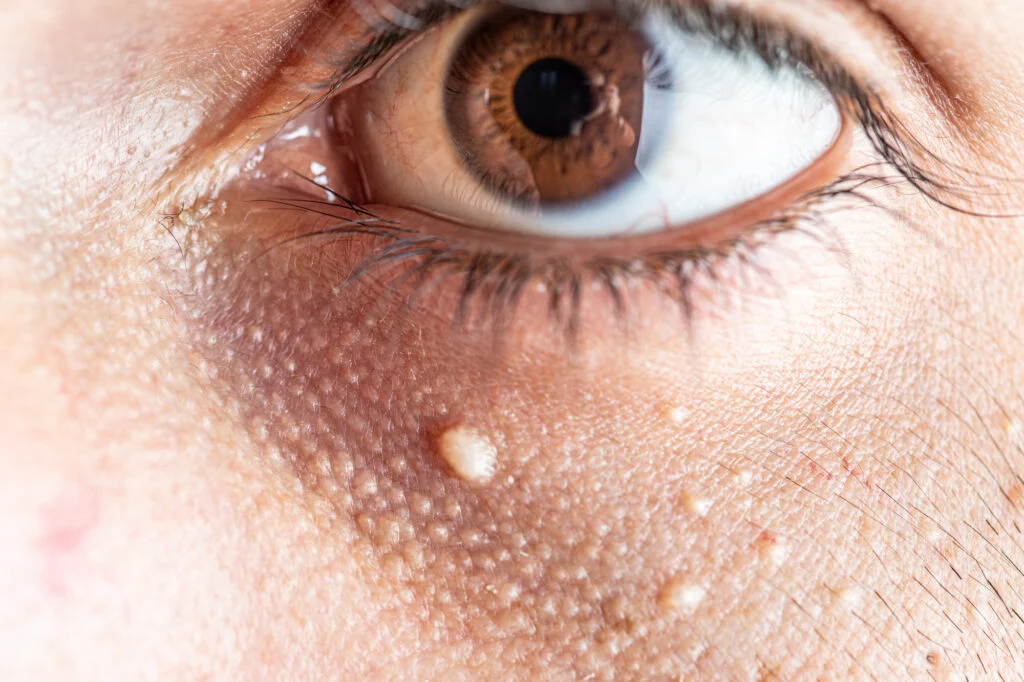What’s the Success Rate of Milia Treatment?

Milia are tiny white or yellowish bumps that commonly appear on the skin, particularly around the eyes, nose, and cheeks. These small cysts are composed of keratin trapped beneath the skin's surface and are often resistant to home remedies. Dermatological interventions have proven to be the most effective approach, which is why professional Milia Treatments have become increasingly popular. These treatments involve specialized techniques performed by dermatologists to safely remove milia without scarring or recurrence. When executed correctly, these procedures yield a high success rate and long-term results, especially under expert supervision. For those seeking professional care, Milia Treatments in Dubai offer advanced clinical solutions tailored to individual skin needs.
Understanding Milia and Why Professional Treatment is Essential
Milia are not acne or whiteheads. They are benign skin cysts formed when dead skin cells or keratin become trapped under the outer layer of skin. Although not dangerous, they can be cosmetically distressing. Self-removal efforts often lead to scarring or infections, which is why professional intervention is the recommended approach.
Dermatologists use sterile tools and medically approved procedures to extract milia safely. These include manual extraction, laser therapy, cryotherapy, and electrocautery, depending on the size, depth, and location of the cysts. Professional treatments not only ensure complete removal but also significantly reduce the chances of recurrence.
How Do Dermatologists Perform Milia Removal?
Successful milia treatment starts with a clinical skin assessment. Dermatologists evaluate the patient's skin type, condition, and extent of milia before recommending the appropriate method. The common treatment options include:
Manual Extraction
Manual extraction is the most widely used method for superficial milia. A dermatologist uses a sterile lancet to gently pierce the surface of the cyst, followed by the application of a comedone extractor to remove the keratin plug. This method is highly effective for isolated lesions.
Laser Therapy
In cases where milia are deeper or more widespread, dermatologists may use advanced laser treatments. Fractional CO₂ or erbium lasers precisely target and vaporize the top layer of the skin, allowing for the safe release of trapped keratin. The precision of laser therapy minimizes trauma and reduces recovery time.
Electrocautery
Electrocautery involves using a fine-tipped heated needle to burn and extract the cyst. This procedure is ideal for persistent or clustered milia. It seals the surrounding skin, minimizing bleeding and speeding up healing.
Cryotherapy
Cryotherapy is occasionally used for multiple or stubborn milia. In this technique, liquid nitrogen is applied to freeze the cysts, which are then sloughed off over time. While not suitable for sensitive areas like under the eyes, it is effective in other regions.
What Determines the Success Rate of Milia Treatment?
The success rate of milia treatment depends on several critical factors. These include the treatment technique, the dermatologist's expertise, the depth and size of the milia, and post-treatment care. When professionally managed, the success rate of milia removal typically ranges from 90% to 98%, with minimal risks of recurrence or scarring.
Key elements that influence the success rate include:
Accurate Diagnosis: Differentiating milia from other skin conditions is essential for effective treatment.
Appropriate Technique: Choosing the right method ensures complete removal without damaging the surrounding skin.
Sterile Procedure: Proper sterilization reduces the risk of infections, enhancing treatment outcomes.
Post-Treatment Guidance: Adhering to dermatologist-recommended skincare routines supports skin recovery and prevents recurrence.
Clinical Advantages of Choosing Dermatologist-Led Milia Treatments
Undergoing milia treatment from a certified dermatologist offers distinct clinical benefits. These include:
Precision and Safety: Dermatologists use tools and techniques that minimize trauma and avoid damage to surrounding tissues.
Minimal Scarring: Professional extraction methods focus on preserving skin integrity, reducing the chance of visible marks.
Long-Term Results: Proper removal ensures that the cysts do not refill, drastically lowering the recurrence rate.
Customized Treatment: Dermatologists tailor treatments to skin type, condition severity, and patient history for optimal results.
Expert Aftercare: Patients receive comprehensive post-treatment instructions to maintain healthy skin and prevent new milia formation.
Benefits of Professional Milia Treatments
Seeking professional milia treatment delivers a range of cosmetic and dermatological benefits that enhance both appearance and skin health. These include:
Flawless Skin Texture: Removal of milia smooths out the skin’s surface, restoring a clear and even tone.
Improved Confidence: Elimination of visible bumps boosts self-esteem, especially when located on prominent facial areas.
Non-Invasive Options: Many procedures are minimally invasive and do not require downtime.
Fast and Effective Results: Most patients see immediate improvements after just one session.
Reduced Recurrence: Professional care focuses not just on removal but also on prevention.
These benefits make clinical milia treatments a worthwhile choice for anyone looking to enhance their skin’s appearance under professional supervision.
Factors That Can Impact Treatment Success
Even though the success rate of professional milia treatments is high, certain external and individual factors can affect the results. Understanding these can help set realistic expectations:
Skin Type: Thicker or oil-prone skin may be more susceptible to recurring milia, requiring ongoing care.
Age: Aging skin may require more delicate treatment approaches due to reduced elasticity.
Lifestyle Habits: Poor skincare hygiene or frequent use of heavy cosmetics can lead to recurrence.
Underlying Conditions: Certain genetic or autoimmune skin conditions may predispose individuals to develop milia.
By managing these contributing elements, dermatologists can ensure optimal and lasting outcomes from treatment.
Duration of Results and Maintenance
After successful removal, milia typically do not return to the same treated areas. However, new cysts can form elsewhere, particularly if underlying causes are not addressed. Dermatologists often provide guidance on preventive measures, such as:
Gentle exfoliation routines
Use of non-comedogenic skincare products
Avoiding thick creams and pore-clogging cosmetics
Follow-up treatments are rarely needed if patients adhere to recommended skincare protocols. The effectiveness and longevity of results from professional milia treatments highlight their superiority over home remedies or over-the-counter methods.
Who is an Ideal Candidate for Milia Treatment?
Anyone experiencing persistent or cosmetically concerning milia is a candidate for dermatologist-led treatment. Ideal candidates typically include:
Individuals with multiple or deep-seated milia
Patients who have not benefited from home remedies
Those seeking cosmetic enhancement without downtime
Individuals prone to scarring and needing precision treatment
A thorough consultation helps determine the most suitable approach for each case, ensuring effective and safe results.
Why Opting for Dermatologists Yields the Highest Success Rate
The high success rate of milia treatments is largely attributed to professional expertise. Dermatologists possess the tools, knowledge, and experience necessary to perform precise and safe extractions. Unlike generic cosmetic treatments, dermatologist-led procedures focus on skin health and safety, which ensures both effectiveness and long-term success.
Patients benefit from:
Accurate skin assessments
Sterile operating conditions
Scientifically backed procedures
Personalized care plans
This specialized approach greatly improves treatment success and minimizes risks, distinguishing professional milia treatments from all other alternatives.
Conclusion
Milia may seem like a minor skin concern, but their persistent nature and potential for recurrence make them a condition best handled by medical professionals. Professional Milia Treatments offer a remarkably high success rate when performed by experienced dermatologists. These procedures are safe, effective, and tailored to individual skin needs, offering not just cosmetic enhancement but also long-term skin health benefits. If you’re looking for a reliable, medically approved solution, consider expert-led Milia Treatments for advanced care and lasting results.
Note: IndiBlogHub features both user-submitted and editorial content. We do not verify third-party contributions. Read our Disclaimer and Privacy Policyfor details.







